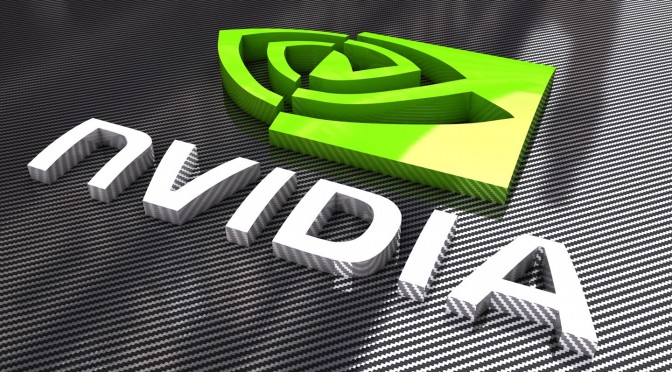According to a recent report coming via The Korea Economic Daily (KED), NVIDIA might once again tap Samsung’s 8nm process nodes to fab its next-gen Ampere GPUs, or the remaining SKUs which are currently on the company’s roadmap, for example the RTX 30 SUPER series GPUs.
This would be Nvidia’s second contract with Samsung. Samsung’s 8nm process has suffered from low yield issues, and this has disrupted the supply of the current Ampere GPUs. Though, previously Jensen Huang had decided to go back to TSMC for its Ampere SUPER lineup, or whatever Nvidia decides to call it, but if this Korean published report is anything to go by, then the second contract is also going to Samsung.
Regardless, since this is just one report coming out of a Korean publication, you should treat this as a rumor, or take it with a grain of salt.
As per the report, Samsung has clinched a deal to make Nvidia’s rest of the upcoming Ampere GeForce RTX 30-series, using its 8-nanometer process technology, according to the semiconductor industry. The contract was confirmed on December 17th, 2020.
The exact value of the latest deal is still not very clear, but the industry estimates the contract is worth around 91 million USD, as a rough estimate. Samsung is expected to make the gaming chips at its Hwaseong plant.
Analysts said the contract is significant in that Samsung won the deal amid market talk that Nvidia’s new GPU has been in tight supply due to unsatisfactory and poor 8 nm process yield rates at its foundry partner Samsung, raising speculation that the US firm may hand over the contract to Taiwan Semiconductor Manufacturing Co. (TSMC).
“Industry officials said Nvidia has favored Samsung over TSMC in consideration of Samsung’s technology and the need for quick delivery of the chips. The RTX3080, priced at $699, the same as its previous model, has been in high demand because of a faster data processing speed.”
To advance its technological leadership, Samsung has introduced an extreme ultraviolet (EUV) lithography technology for 7 nm and other finer products/process nodes. The wavelength used in EUV is significantly also lower than other standard lithographic scanners.
“Through the more advanced 4 nanometer processing node, we’ll further narrow the gap with TSMC,” said Samsung’s foundry chief Choi.
With RTX 30-series, NVIDIA used Samsung’s 8nm nodes, and it had its issues during launch; however, now there seems to be supply issues as well. Nvidia’s new GeForce RTX 30 GPUs have been in tight supply due to unsatisfactory 8nm process yield rates at its foundry partner Samsung.
Already getting hold of an RTX 3080 or RTX 3090 is very hard and adding to this the problems will likely increase. However, mid-range cards like RTX 3070 and RTX 3060 Ti are found to be in stock sometimes but due to the increased demand from gamers, they are getting sold out soon as well.
In the meantime, it has also been reported that NVIDIA will end the production of RTX 20 series Super cards. Surely, the RTX 2060 and GTX 16-series will be in production until their Ampere replacements come to the market.
According to Nvidia CEO Jensen Huang, GeForce RTX 30-series GPU shortages will last until 2021. A recent report coming via Cowcotland also claims that the RTX 30-series GPU production and supply is being bottlenecked by GDDR6 Memory scarcity as well.
Both AMD and NVIDIA have been hit by GDDR6 supply constraints. The RTX 3080 and 3090 GPUs are expected to be less impacted by this problem as they sport the GDDR6X Memory type.
“According to our sources, it will take weeks for the situation to return to normal, which means that the availability of all models will not improve until February, even by blocking the release of some models (such as the 6900XT Custom)”, – Aurélien LAGNY, Cowcotland.
In a recent webcast, NVIDIA also confirmed that global shortages of wafers, substrate, and components are affecting the availability of the Ampere graphics cards. The company admits that there are constraints beyond chip supply, so the issue with shortages is indeed very complicated.
“We do have supply constraints and our supply constraints do expand past what we are seeing in terms of wafers and silicon, but yes some constrains are in substrates and components,” said Colette Kress, CFO of Nvidia, at Credit Suisse 24th Annual Technology Conference. “We continue to work during the quarter on our supply and we believe though that demand will probably exceed supply in Q4 for overall gaming.”
Even if the supply constraint was solved, it would take a couple of more months for the production and supply channels to catch up with demand.
Stay tuned for more!
Hello, my name is NICK Richardson. I’m an avid PC and tech fan since the good old days of RIVA TNT2, and 3DFX interactive “Voodoo” gaming cards. I love playing mostly First-person shooters, and I’m a die-hard fan of this FPS genre, since the good ‘old Doom and Wolfenstein days.
MUSIC has always been my passion/roots, but I started gaming “casually” when I was young on Nvidia’s GeForce3 series of cards. I’m by no means an avid or a hardcore gamer though, but I just love stuff related to the PC, Games, and technology in general. I’ve been involved with many indie Metal bands worldwide, and have helped them promote their albums in record labels. I’m a very broad-minded down to earth guy. MUSIC is my inner expression, and soul.
Contact: Email

